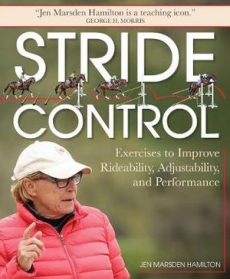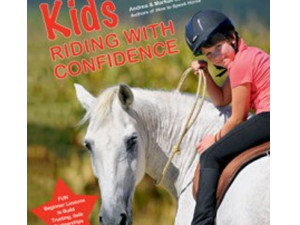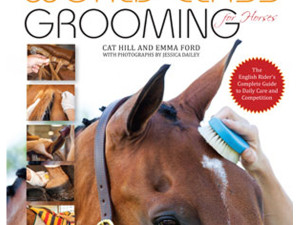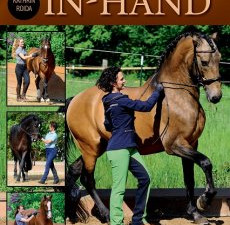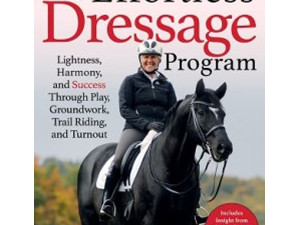Stride Control
Stride Control
$45.00
Stride Control
AUTHOR: JEN MARSDEN HAMILTON
Understanding and implementing stride control (being able to adjust the number of strides before and between fences) improves a horse’s rideability and allows the rider to further improve the horse’s technique over an obstacle. Jen Marsden Hamilton discovered striding from former US Show Jumping Chef d’Equipe George Morris, who credits her as being the first student to whom he taught the method that he’d learned from Bertalan De Némethy, one of his mentors.
Stride control is an essential part of any rider’s development when jumping obstacles, and jumping them well, is a goal. Paperback, 176 pages, illustrated
Out of stock
CompareDescription
Stride Control
Stride control is an essential part of any rider’s development when jumping obstacles, and jumping them well, is a goal. Now, after coaching countless riders and horses around the world in the striding techniques that brought her success during her own impressive competitive career, and Hamilton has compiled her knowledge in a concise book of exercises and insightful strategies.
This fun, approachable guide will help all riders train with correctness and form good habits at home so they can be stars at their next jumping or eventing competition. Exercises include detailed set-up instructions and illustrations for reference; clear discussion of the purpose and strategy for the training session; and helpful tips, to ensure all involved are benefiting from the lesson. Throughout, Hamilton’s straight-talk and wry humour entertain as well as advice, providing an all-around superb guide to a necessary jumping skill.
Related products
Kids Riding With Confidence
Kids Riding With Confidence $26.95Kids Riding With Confidence -Hardback
More easy-to-learn lessons in natural horsemanship for kids!
Andrea and Markus Eschbach, authors of the bestselling book How to Speak Horse, are back with another fabulously illustrated introduction to safe and fun horse handling and riding skills.
Beginning with the basics of how horses use body language to communicate, Andrea and Markus teach children how to “listen” to what their horse is saying and “talk back” in a way he understands while leading, grooming, tacking up, and eventually riding. With a focus on building the horse’s trust in his human partner, young riders gain confidence through exercises on horseback. Best of all, Andrea and Markus nurture a habit of care and respect for the horse that helps prepare children for a lifetime of rewarding time spent in the company of horses.
World Class Grooming for Horses
World Class Grooming for Horses $69.95World Class Grooming for Horses Spiral Bound
When owning, training, riding, and showing horses, there is a certain “look” to which one aspires. Often it is set by the horses seen on television, at special events, in public performances, and in top competition around the globe. World-class “turnout”—a horse in peak condition, perfectly coiffed and luminous with good health, outfitted with gleaming and well-fit tack appropriate for his sport—literally takes your breath away.
No one knows how to do all of this better than those working as “professional grooms” in the barns of the world’s top riders and trainers. It is the responsibility of these elite experts to keep their four-legged charges happy, healthy, and primed for peak performance—in body and mind.
Now, two of the best professional grooms in the business share their trade secrets, with over 1200 color photographs demonstrating how to clean the horse from nose to tail; wrap, clip, braid, and ship him; prepare him for or present him in various English competitive scenarios; and care for him after work or showing so he is rested and ready to do it all again. This book is everything you need to know from the pros: The ultimate modern-day guide for all riders who want their horses to look and feel their best.
Dressage Training In Hand
Dressage Training In Hand $54.95Dressage Training In Hand
Over the course of her riding and horse training career, Kathrin Roida has progressively gained a deep appreciation for the benefits of gymnastic exercises, particularly those that can be taught to the horse from the ground. “In-hand” training has long been used to help develop the dressage horse, conditioning and suppling his body while at the same time preparing his mind to grasp the movements that may eventually be expected under saddle.
Uta Graf’s Effortless Dressage Program
Uta Graf’s Effortless Dressage Program $49.95Uta Graf’s Effortless Dressage Program Paperback
Top international dressage rider Uta Gräf has made a name for herself as a trailblazer in the competitive dressage world as she strives to combine the highest levels of performance with natural horse care in observance of the needs of the equine body and mind.
Acknowledging the individuality of each horse and including specific problems and solutions, Graf provides a hands-on guide to following competitive ambition in the dressage ring while keeping what’s best for the horse in mind. The key, above all, is keeping tension and rushing and anxiety at bay; with Graf’s guarantee that her system will keep horse and rider “worry-free,”

